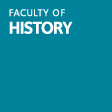Liu Xuehu meipu was designed to be a manual on the painting of plum blossoms; however, its original pedagogical content is demonstrably marginal, while the majority of its pages are filled with more than two hundred commentaries, letters, encomiums, and poems extolling the talent and virtue of its author, Liu Shiru (act. 16th c.). This was not the only volume of its type in late Ming China. A prolific scholar-publisher of Jiaxing, Zhou Lüjing (1542-1633), also published a series of anthologies which only contain hundreds of allographic writings dedicated to him by contemporary elites, including many cultural luminaries such as Li Rihua (his nephew), Chen Jiru, Dong Qichang, Tu Long, and Wang Shizhen. While highlighting the unique programs of these books wherein the auxiliary paratexts of encomiums, endorsements, and postfaces in fact function as primary texts, this paper will investigate how such anthologies were related within the larger cultural matrix of the time.



